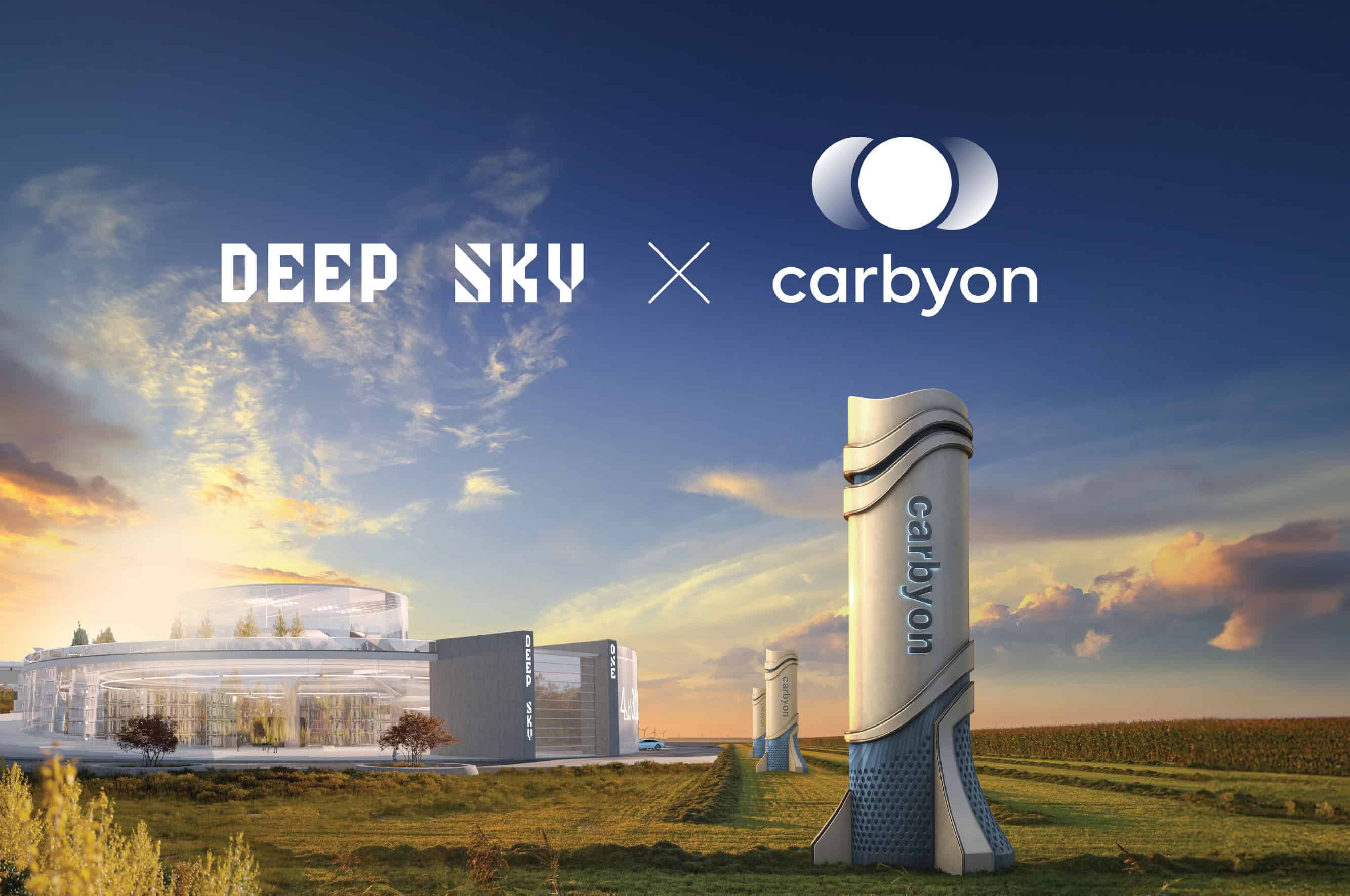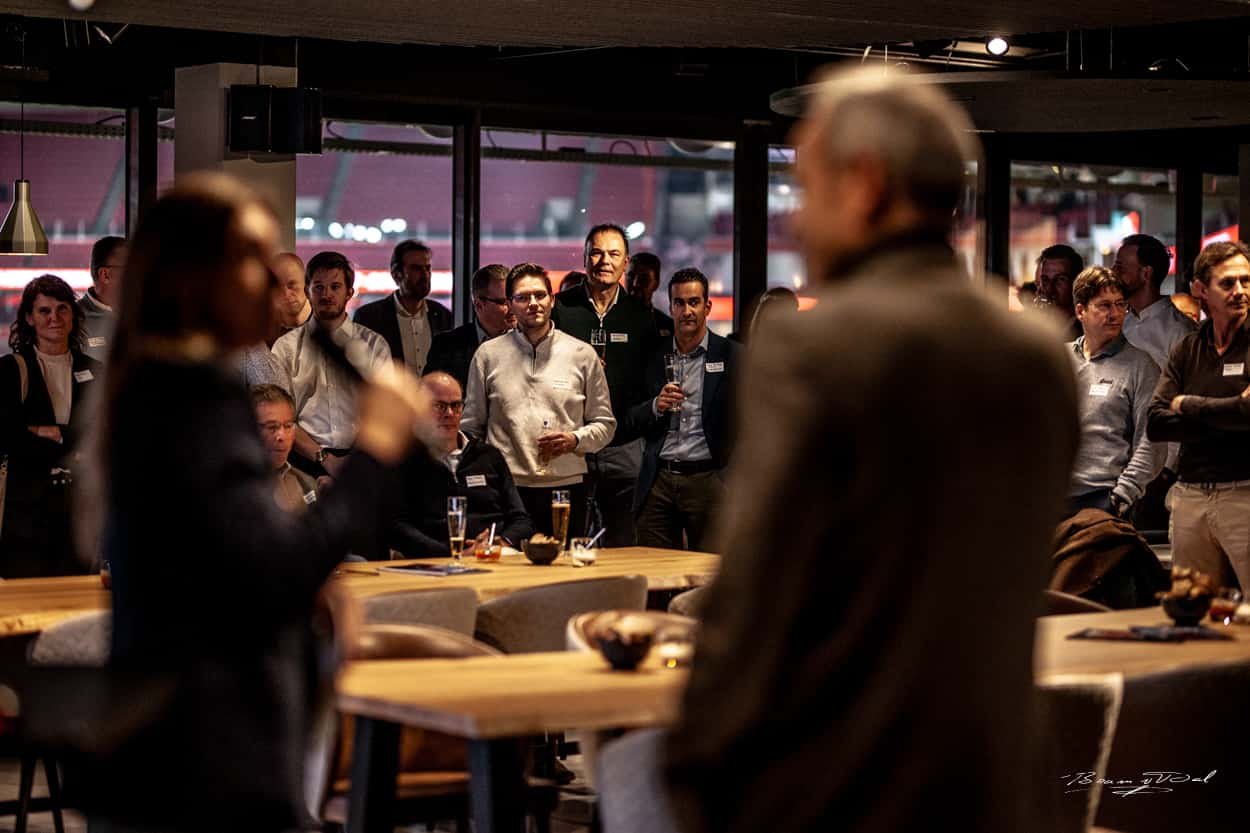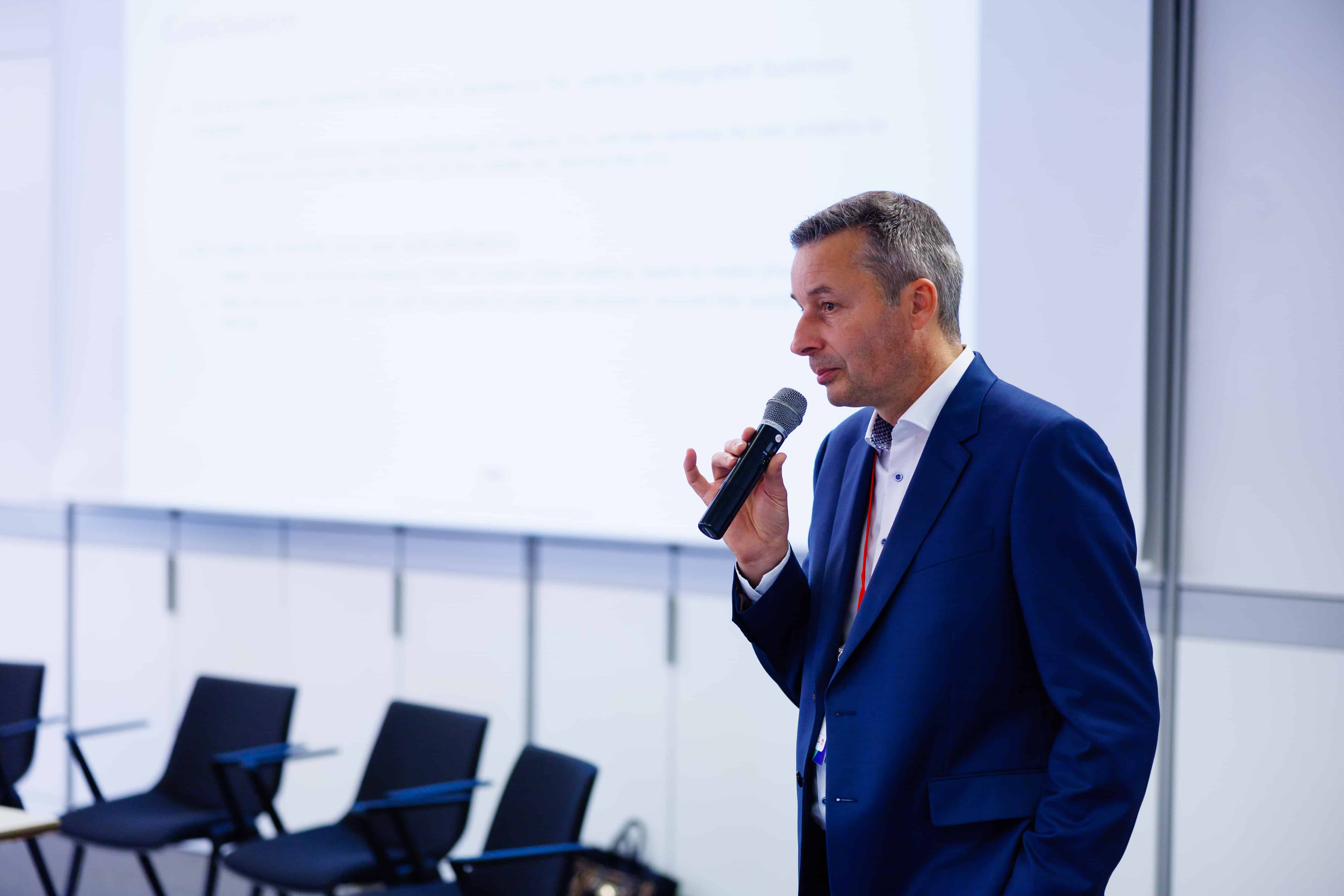
As a TNO spin-off with its gigantic knowledge heritage and with the brightest engineers in his team, technology is not Hans de Neve’s biggest worry. Of course, the machines Carbyon is building need further refinement and – most of all – miniaturization. However, the CEO is confident that his team is on the right track, also compared to Carbyon’s competitors. No, if it’s anything keeping him awake at night, it’s Carbyon’s business proposition. In a workshop at the Level Up event in Eindhoven, he talked about the challenges his company – a 2020 Gerard & Anton Award winner – is currently facing.
De Neve dreams of a world with negative emissions. “That’s all about undoing what we’ve done wrong in the past 100 or 150 years. Our target is to build machines which are meant to filter CO2 out of atmospheric air in an attempt to undo climate change”, Hans de Neve started his talk. “So it’s all about climate change. I think by now, everyone knows that we’ve emitted way too much CO2 into the atmosphere. Right now, we still emit about 40 billion tons of fossil CO2 every year. So that’s a lot to take back from the atmosphere. And it’s not going to stop overnight either, I guess.”
Producing green hydrogen
One of the potential business models for a company like De Neve’s is producing green hydrogen or green carbon out of the CO2 that is filtered from the air. “So, instead of using fossil oil to produce chemicals or fuels, you could use green hydrogen and carbon for the aviation or chemical industry. Green carbon can be harvested from water or air. It can be done via biomass, but it can also be done via a machine, directly capturing it from the atmosphere.”
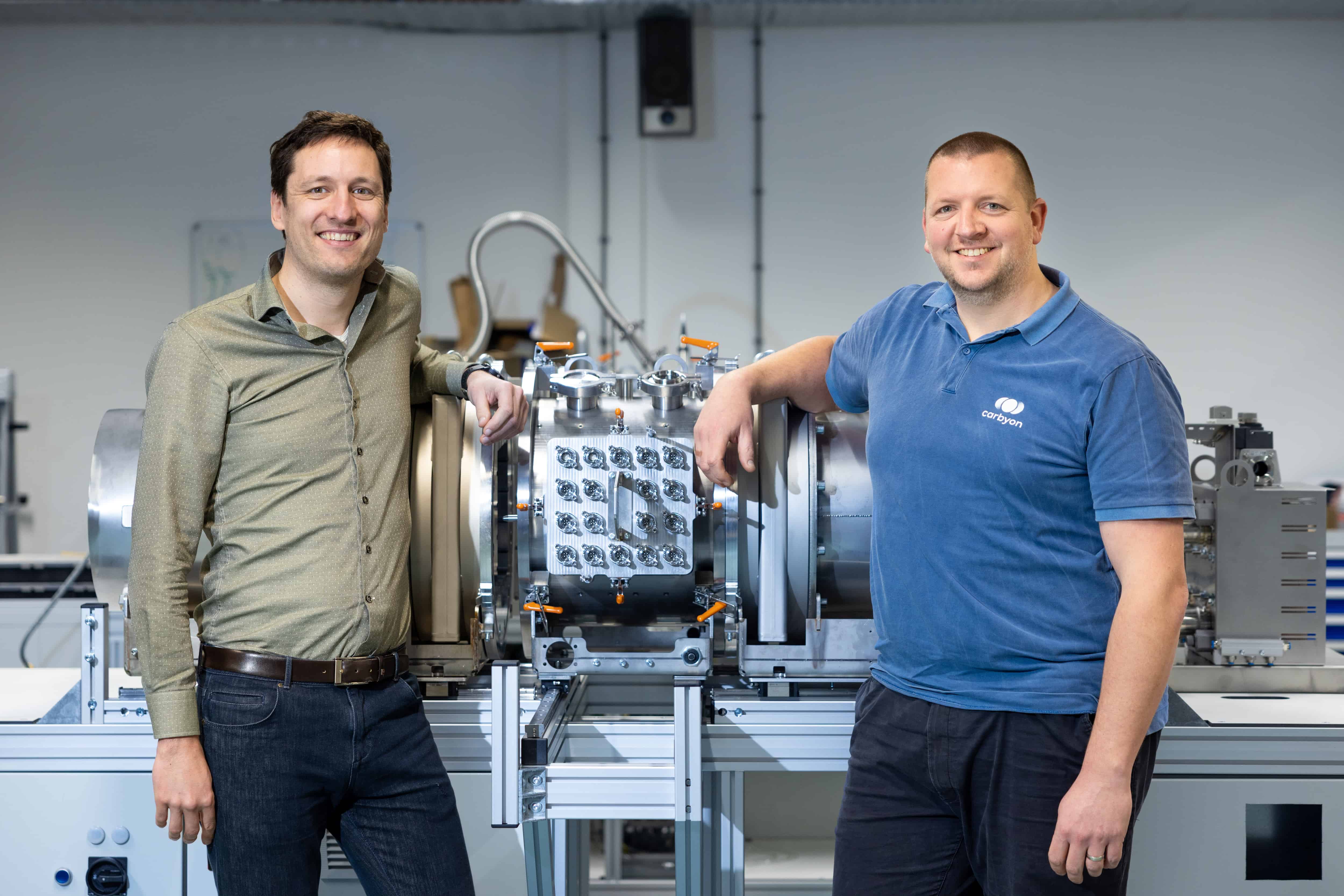
Now that Carbyon has shown it can be done, it’s all about turning it into a business, De Neve adds. “Right now, the prices for renewable fuels are still three to four times the price of fossil fuels. So it’s simply not happening. Even if we have the technology, it’s not happening. The cost of capturing CO2 from air is around 600 to 700 euros per ton. In order for business models to fly, this needs to be as low as 100 euros per ton. So far, nobody has been able to do that. So that’s one of the challenges that we, as a start-up, have in this space.”
One of the challenges of this technology is the colossal nature of it. You need huge machines to capture CO2 from the atmosphere. “And that’s also the reason why it’s so expensive. It’s a lot of steel. It’s a lot of chemicals.” So Carbyon’s goal is to make it smaller. “The idea is to capture the same amount of CO2 with a much smaller machine by improving the material’s characteristics.”
Agriculture
When looking for the ideal business model, a company needs to know the applications customers would be willing to pay for. “One of the first ones with a willingness to pay, is the controlled environment agriculture, like greenhouses and vertical farms. They use a lot of CO2 today, but it’s all fossil CO2. There is a big incentive in that industry to turn to renewable CO2 for various reasons. To a lesser extent, you can also think of carbonated drinks like cola. Or the breweries, they also add a lot of CO2.”
Much of his focus is on synthetic fuels. “All the petrochemical companies today are looking into the options, but, of course, they’re only going to do it when the cost is lower than the cost of producing fossil fuels. So either the cost becomes lower by itself, or there is, a positive incentive from governments to tax fossil fuels in favor of renewable fuels. There will be a tipping point, like there has been with solar panels, like there has been with wind turbines.” For that to happen, De Neve doesn’t count on the car industry. “We all know the battery will prevail there. But think about aviation, about shipping, and about the whole chemical industry.”

Addressing the market
There are several ways to address a market with Carbyon’s machines, De Neve explains. “For example, you can sell it as a service. So I keep being the owner of the machine, and you pay me for every ton of CO2 I produce. Most companies right now developing technology to filter CO2 from the air go for this business model. The reason is that this is the business model with the highest earnings. You actually cover the whole value chain. You can charge a nice upgrade fee for the CO2 that you produce. But it requires that you become a kind of project developer, which is a completely different business.”
Another option is to sell the captured CO2 as carbon credits to companies polluting with fossil CO2. “That’s a business model which is really growing. Carbon credit markets are organizations that trade between projects that generate carbon credits by storing CO2 in biomass by planting trees or storing it under the ground.”
A third option is to focus on equipment sales. Compare it to ASML, not aiming to produce chips by itself but just selling the machines to enable other companies to do that. “In that case, you focus on doing one thing good: producing machines. And then sell these machines worldwide to whoever wants to create carbon credits. And whoever wants them to sell the CO2 as a service. Or, of course, to whoever wants to produce fuels or chemicals or use them in the greenhouses.” The challenge with this option is, obviously, attracting enough money to build these machines in the first place.
Finally, there’s the option to only license the technology, or even make it available open-source.
Equipment sales
“All of these scenarios are kind of what a start-up like ours is facing. At this moment, we have chosen for equipment sales, as one of the few in our market. But even knowing this, there are many choices still to be made. Am I going to make it all by myself? Am I going to outsource it to a third party? Will I do joint ventures with other parties? There are lots and lots of choices that even a start-up needs to make to find the right business model.”
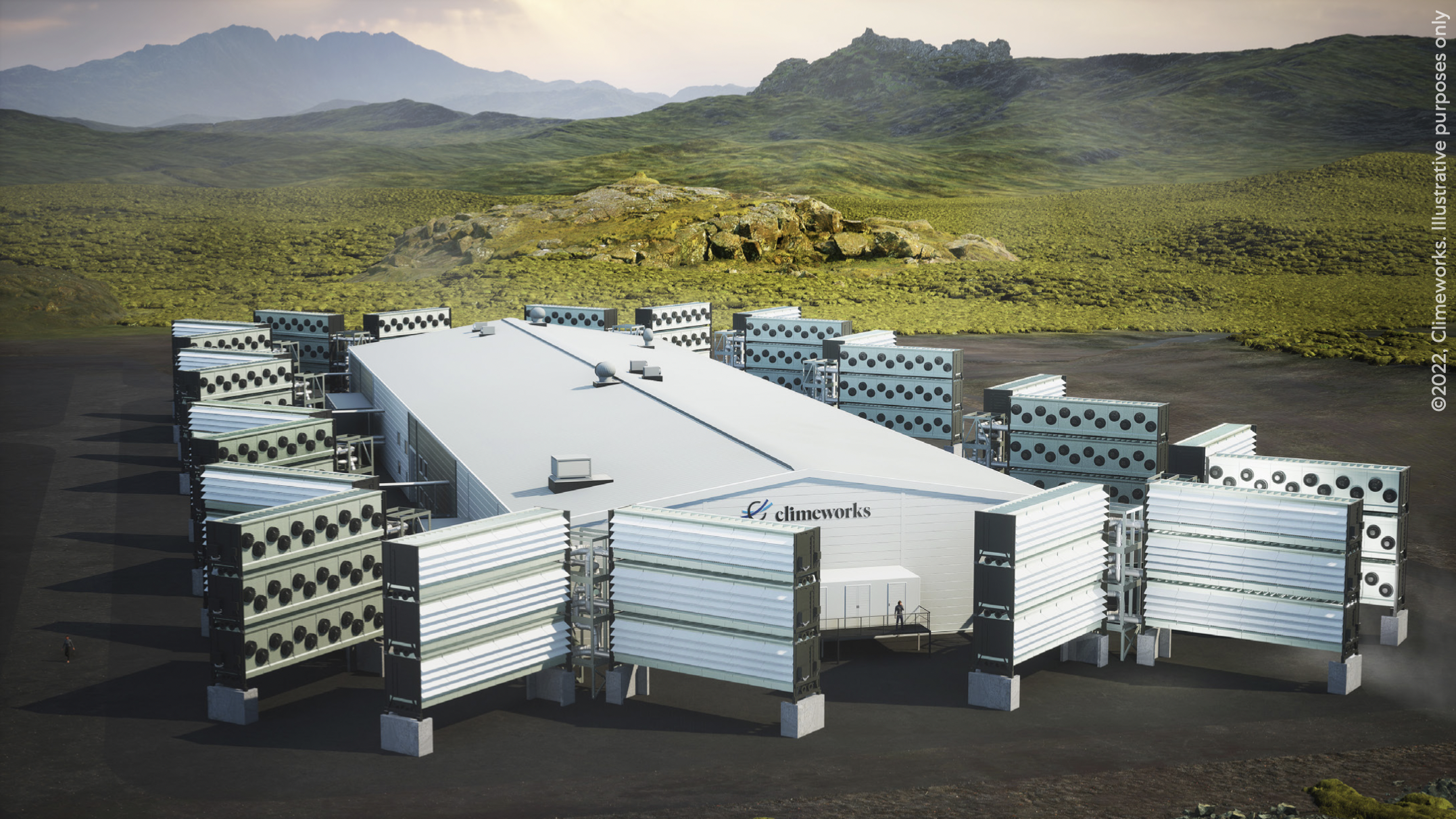
Although selling carbon credits is a growing market, De Neve is hesitant to enter it, mainly because it’s a badly regulated market at this moment. “In itself, this business model of carbon credits is a really great way of doing things. But you need to ensure that when you sell one ton of CO2 you’ve extracted from the atmosphere, it’s really removed. And that it’s actually accounted for, that it’s being verified. But this is not yet in place. Moreover, the market is flooded with cheap carbon credits; there’s no way you can actually capture CO2 for a few euros per ton.”
Not mature
One of the challenges of today is that the carbon-capturing market is still far from mature. “My general observation is that in premature markets there is definitely the tendency for doing things more vertically integrated. Nine out of ten companies develop their own projects to use the machine and sell the CO2 as a carbon credit because they see the most value in doing that. Also, my shareholders are pushing for that. They say, why sell the machines? Sell the CO2, you can earn more money, and sooner.”
De Neve makes a different choice anyway, expecting the market to mature quickly. “In more mature markets, like the semiconductor industry, you already see specialization. ASML builds the machine, TSMC produces the chip and Apple makes the iPhone. Mature markets are much less vertically integrated and more differentiated. That’s also what’s going to happen for technologies like climate mitigation. Specialization is coming.”
The question remains whether Carbyon will get the time to wait for that moment. No matter how good your technology is, all in all, it is challenging, De Neve concludes, “especially for young companies like ours.”



